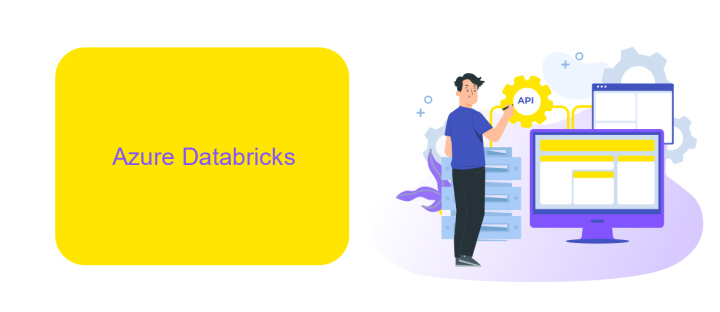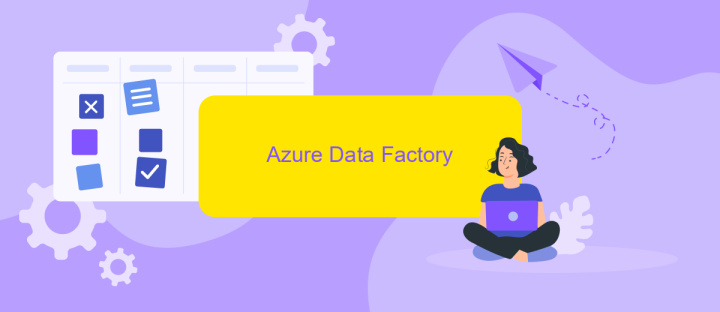What is Azure Databricks and Data Factory
Azure Databricks and Data Factory are two powerful tools within Microsoft's Azure ecosystem, designed to enhance data processing and analytics. Azure Databricks offers a collaborative environment for big data and machine learning, while Data Factory provides robust data integration services. Together, they enable seamless data workflows, from ingestion to transformation and analysis, empowering businesses to make data-driven decisions.
Introduction
Azure Databricks and Data Factory are two powerful tools within the Microsoft Azure ecosystem that cater to big data analytics and data integration needs. Azure Databricks provides a fast, easy, and collaborative Apache Spark-based analytics platform, while Azure Data Factory is a cloud-based data integration service that orchestrates and automates data movement and transformation.
- Azure Databricks: A unified analytics platform optimized for Azure, enabling data engineers, data scientists, and analysts to collaborate efficiently.
- Azure Data Factory: A scalable data integration service that allows for the creation, scheduling, and orchestration of data workflows.
These tools together empower organizations to streamline their data processes, from ingestion and transformation to advanced analytics and machine learning. For seamless integration and automation of these processes, services like ApiX-Drive can be utilized to connect various applications and automate data workflows, enhancing productivity and efficiency.
Azure Databricks

Azure Databricks is a powerful analytics platform designed to accelerate data engineering, data science, and machine learning workflows. Built on Apache Spark, it offers a unified analytics workspace where data engineers and data scientists can collaborate seamlessly. The platform provides a range of tools for data processing, including real-time analytics, batch processing, and stream processing, making it ideal for handling large datasets efficiently. With its integrated machine learning capabilities, Azure Databricks allows users to build, train, and deploy models at scale, significantly reducing time-to-market for data-driven solutions.
One of the standout features of Azure Databricks is its ability to integrate with various data sources and services. Through its native connectors, users can easily connect to Azure Data Lake Storage, Azure SQL Database, and other data repositories. Additionally, for more complex integration scenarios, services like ApiX-Drive can be utilized to automate and streamline data workflows. ApiX-Drive enables seamless integration between different applications and services, ensuring that data flows smoothly across the entire analytics pipeline. This enhances productivity and allows teams to focus more on deriving insights rather than managing data logistics.
Azure Data Factory

Azure Data Factory is a cloud-based data integration service that allows you to create data-driven workflows for orchestrating and automating data movement and data transformation. With Data Factory, you can ingest data from various sources, process it, and publish the output to data stores for analytics and business intelligence. The service supports a wide range of data sources, including on-premises and cloud-based systems.
- Data Ingestion: Collect data from different sources such as databases, files, and APIs.
- Data Transformation: Use data flow activities to transform and clean the data.
- Data Orchestration: Schedule and manage the workflows to ensure data is processed in a timely manner.
- Data Monitoring: Track the performance and reliability of your data pipelines.
Additionally, tools like ApiX-Drive can complement Azure Data Factory by simplifying the integration process with various third-party applications and services. ApiX-Drive offers a user-friendly interface for setting up integrations, automating workflows, and ensuring seamless data transfer between different platforms. This makes it easier to manage complex data integration scenarios without extensive coding or manual intervention.
Comparison

Azure Databricks and Data Factory are two essential services offered by Microsoft Azure for data engineering and analytics. Azure Databricks is an Apache Spark-based analytics platform optimized for Azure, designed for big data processing and machine learning. On the other hand, Azure Data Factory is a cloud-based data integration service that orchestrates and automates data movement and transformation.
While both services are pivotal for data workflows, they serve distinct purposes. Azure Databricks excels in data transformation, advanced analytics, and machine learning tasks, making it ideal for data scientists and engineers. Azure Data Factory, however, focuses on data ingestion, preparation, and orchestrating ETL (Extract, Transform, Load) processes, catering to data integration needs.
- Azure Databricks: Ideal for big data processing and machine learning.
- Azure Data Factory: Best for data integration and ETL processes.
- ApiX-Drive: Facilitates seamless integration between various data sources and Azure services.
In summary, Azure Databricks and Data Factory complement each other in a data pipeline, with Databricks handling complex analytics and Data Factory managing data flow and orchestration. Tools like ApiX-Drive can further enhance these services by providing easy integration solutions, streamlining the data engineering process.
Conclusion
In conclusion, Azure Databricks and Data Factory offer powerful tools for data engineering, data science, and data analytics. Azure Databricks provides a collaborative environment for data scientists and engineers to develop, train, and deploy machine learning models at scale. On the other hand, Azure Data Factory enables seamless data integration and orchestration, facilitating the movement and transformation of data across various sources and destinations.
When used together, these services create a robust ecosystem for end-to-end data processing and analytics. Integrating other tools, such as ApiX-Drive, can further enhance the capabilities of these platforms by automating data flows and streamlining workflows. This combination ensures that organizations can efficiently manage their data pipelines, derive actionable insights, and accelerate their digital transformation initiatives.
FAQ
What is Azure Databricks?
How does Azure Databricks integrate with other Azure services?
What is Azure Data Factory?
Can Azure Data Factory be used for real-time data processing?
How can I automate data workflows without extensive coding?
Do you want to achieve your goals in business, career and life faster and better? Do it with ApiX-Drive – a tool that will remove a significant part of the routine from workflows and free up additional time to achieve your goals. Test the capabilities of Apix-Drive for free – see for yourself the effectiveness of the tool.

